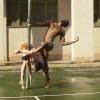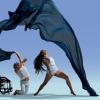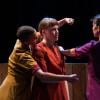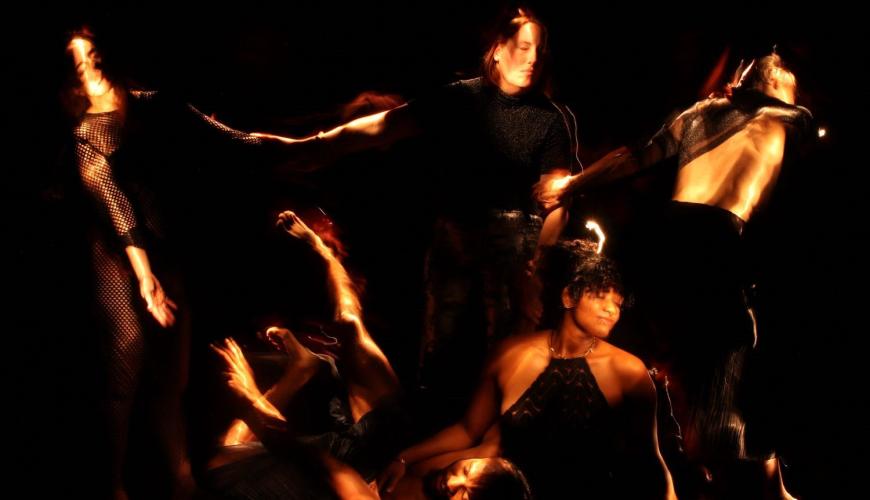
What is the experience of watching a dance performed almost entirely in darkness? If you rely on sonic traces, fractal glimpses of human forms, and pathways followed primarily by your ears, not your eyes, will your imagination and subconscious make sensory logic of the action onstage? Will the show’s themes ring truer and more convincing than if standard theater lighting prevailed?
These are just a few of the intriguing questions posed in Into the Dark, a new work by choreographer Jess Curtis, founder and director of Jess Curtis/Gravity, and created in partnership with the San Francisco LightHouse for the Blind and Visually Impaired. The production introduces a diverse ensemble of blind, low-vision, and sighted performers from the Bay Area and Berlin, where four shows were presented prior to the San Francisco performances that will take place Nov. 9–19 at CounterPulse.
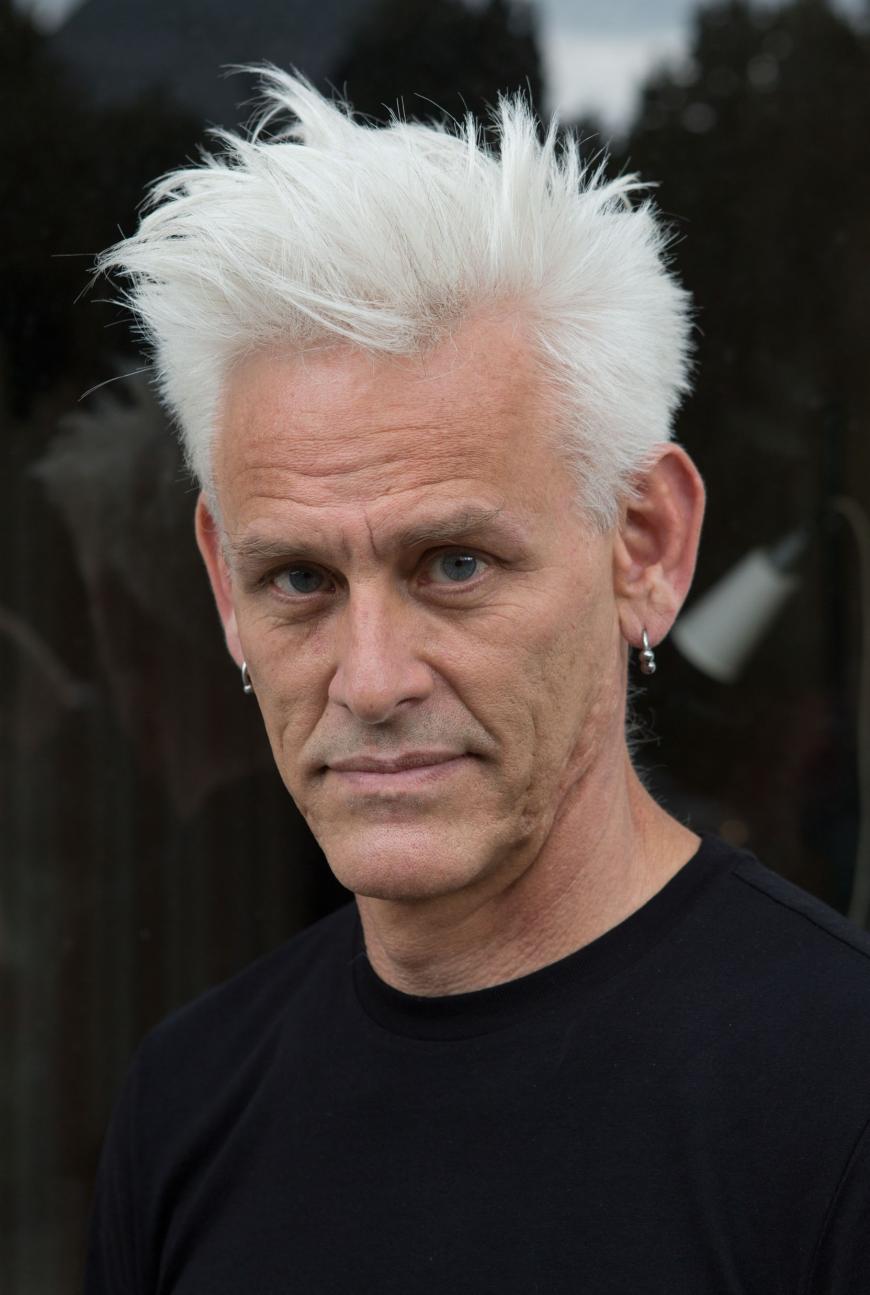
The origins of the partnership with LightHouse are explained by the dance organization: “Since 1902, LightHouse has brought blind and visually impaired (B/VI) individuals of all ages together to build community and learn skills that enable full, engaged, and productive lives. Gravity’s artistic director has taught regularly at LightHouse’s adult activities programs. LightHouse’s adult program coordinators have brought groups of B/VI audience members to Gravity’s home season each year since 2016. [And] since 2019, Gravity and Lighthouse have co-hosted and co-presented panels on access practices in the arts.”
Into the Dark is an investigation into the binary constructs of light and dark, according to Curtis. In an email interview, he says, “In general, I find most binaries to be oversimplifications. It seems to me binary thinking ultimately creates chaos and violence by misrepresenting the actual complexity of the universe. In my work, I try to attend to details and excavate complexity, which tends to break down binary concepts. Life is much more often composed of spectrums, phases, or fractals. I find that beautiful and will continue to explore that.”
In rehearsals, the artists have used only low-tech wayfinding tools. (High-tech alternatives do exist, such as BlindSquare and other apps.) The cast and Curtis relied on systems borrowed from goalball, a sport for visually impaired players that uses raised lines on the floor to create tactile guides, which here the performers follow to navigate the space. “We also use echolocation throughout the piece,” says Curtis, referring to sounds and calls that indicate a performer’s position or trajectory. During rehearsals, actions and movements were also shared by descriptions in words, sounds, and other nonvisual methods.
For audiences, Into the Dark will provide a unique opportunity for fully sighted and visually impaired people alike to share similar encounters. “Into the Dark is ultimately an immersive choreographic sound installation,” says Curtis. “We come from a dance background, but because the piece takes place 90 percent in complete darkness, the primary experience of everyone in the space (not just the blind and low-vision folks) is sonic and spatial. Composer Samuel Hertz developed extensive sound scores that are performed live by the cast each night that are moving (literally), haunting, sometimes humorous, and beautiful.”
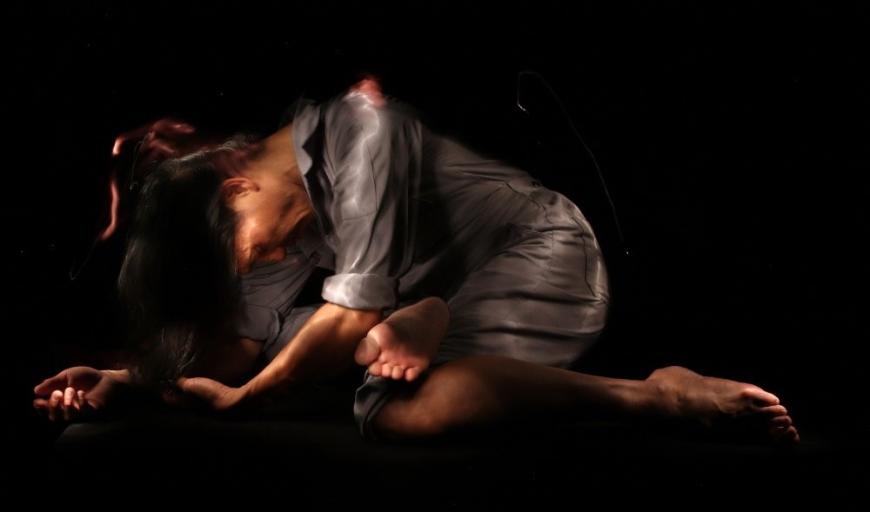
Asked in what ways this project and others he has explored with Lighthouse have stretched him and Gravity and might inform future works, Curtis says, “Working with blind collaborators on my last three projects has underlined just how much dance [as it’s often] taught or transmitted is extremely oculo-centric. Finding strategies for communicating movement phrases or gestures without relying on vision has allowed us to deepen our understanding of the movements in the work by using tactile, sonic, and descriptive tools … and will hopefully [deepen] our audiences’ experience.”
At CounterPulse, Into the Dark will be accompanied by a photo exhibition of the blind photographer Gerald Pirner. The pictures show Gravity performers and were produced in the tradition of light painting, a photographic technique originally developed by Man Ray and Pablo Picasso. The exhibition is viewable prior to the performances and by appointment by emailing [email protected].


